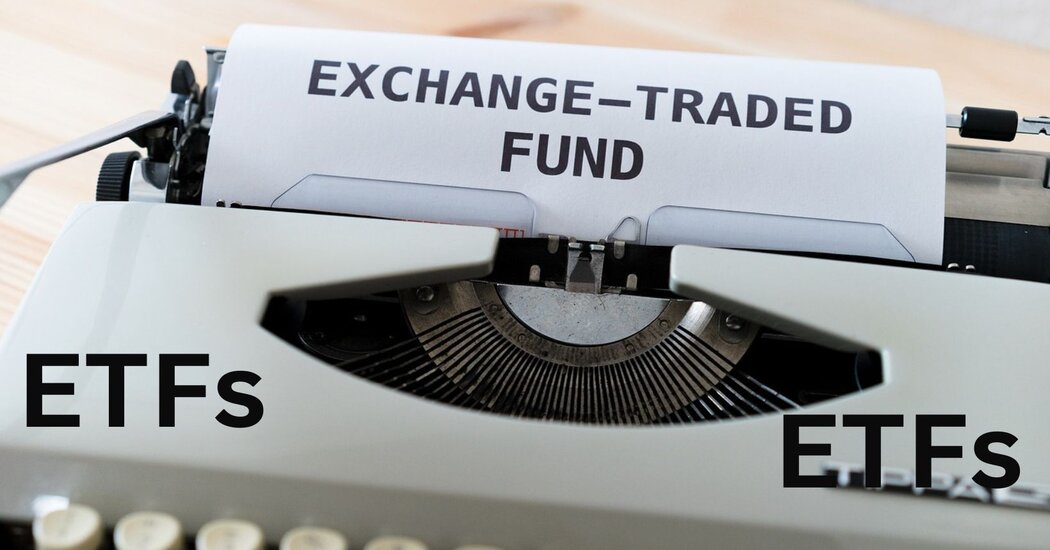Exchange-Traded Funds (ETFs) have gained immense popularity among both individual and institutional investors in recent years. These investment vehicles offer a convenient and cost-effective way to diversify your portfolio, gain exposure to various asset classes, and potentially generate returns. This article will provide a detailed guide on how ETFs work, covering the following topics:
What are ETFs?
ETFs are investment funds that are traded on stock exchanges, just like individual stocks. They are designed to track the performance of an underlying index, commodity, bond, or a basket of assets. ETFs provide investors with a way to gain exposure to a wide range of assets without having to purchase each individual security separately.

How do ETFs work?
ETFs work on a simple principle: they aim to replicate the performance of the assets they track. Here’s how they achieve this:
- Portfolio Management: The issuer of the ETF creates and manages a portfolio of assets that mirrors the composition of the underlying index or asset class.
- Creation and Redemption: To maintain price integrity, ETFs rely on an “authorized participant” (typically large institutional investors) who can create or redeem shares of the ETF. When demand for the ETF increases, new shares are created, and when it decreases, shares are redeemed.
- Arbitrage Mechanism: ETF prices are expected to closely track the net asset value (NAV) of their underlying assets. If the ETF’s price deviates from its NAV, authorized participants can engage in arbitrage to bring them back in line.
- Liquidity: ETFs can be bought and sold throughout the trading day, providing liquidity and flexibility to investors.
Types of ETFs
There is a wide variety of ETFs available, catering to various investment objectives. Some common types include:
- Index ETFs: These track a specific stock market index, such as the S&P 500 or NASDAQ.
- Sector and Industry ETFs: Focused on a particular sector or industry, like technology, healthcare, or energy.
- Commodity ETFs: These track the price of commodities like gold, oil, or agricultural products.
- Bond ETFs: Provide exposure to various fixed-income securities, including government, corporate, and municipal bonds.
- International ETFs: Track foreign stock markets and provide exposure to international companies.
- Smart Beta ETFs: These ETFs use alternative weighting methodologies to potentially outperform traditional market-cap-weighted indexes.

Benefits of ETFs
- Diversification: ETFs allow investors to diversify their portfolios by investing in a range of assets.
- Liquidity: ETFs can be bought or sold on an exchange throughout the trading day.
- Low Expense Ratios: Many ETFs have lower expense ratios compared to actively managed funds.
- Transparency: ETFs disclose their holdings daily, providing investors with greater transparency.
- Tax Efficiency: ETFs are typically tax-efficient due to the creation and redemption mechanism.
Risks and Considerations
- Market Risk: ETFs are subject to market fluctuations and may lose value.
- Tracking Error: Some ETFs may not perfectly track their underlying assets, leading to a tracking error.
- Trading Costs: Commissions and bid-ask spreads can affect the overall cost of investing in ETFs.
- Liquidity Risk: Less popular ETFs may have lower trading volumes, affecting liquidity.

How to Invest in ETFs
Investing in ETFs is straightforward:
- Choose a Broker: Open a brokerage account with a reputable broker that offers access to the stock exchange where the ETFs are listed.
- Research and Select ETFs: Conduct research to identify ETFs that align with your investment goals.
- Place an Order: Buy shares of the ETF through your brokerage account, specifying the number of shares you wish to purchase.
- Monitor Your Portfolio: Keep track of your ETF investments and rebalance your portfolio as needed.
ETF vs. Mutual Funds
ETFs and mutual funds are similar in that they pool money from multiple investors to invest in a diversified portfolio. However, there are key differences:
- ETFs trade on exchanges like stocks, while mutual funds are bought and sold at the end of the trading day at the net asset value (NAV).
- ETFs are more tax-efficient due to their creation and redemption mechanism.
- Mutual funds may have higher expense ratios compared to ETFs.
- Mutual funds are typically actively managed, while most ETFs passively track an index.
Tax Considerations
ETFs are known for their tax efficiency due to the in-kind creation and redemption process. They often result in fewer capital gains distributions, reducing taxable events for investors. However, it’s essential to consult with a tax advisor to understand how ETFs may affect your specific tax situation.
Building a Diversified ETF Portfolio
To create a diversified portfolio using ETFs, consider a mix of asset classes, sectors, and geographies. Diversification helps reduce risk and achieve long-term financial goals. It’s also crucial to periodically rebalance your portfolio to maintain your desired asset allocation.
Conclusion
Exchange-Traded Funds have become a valuable tool for investors seeking diversified exposure to a wide range of asset classes and investment strategies. Understanding how ETFs work, their benefits, risks, and tax implications is essential for making informed investment decisions. By carefully selecting and managing your ETF investments, you can work toward your financial goals and build a robust investment portfolio.
MORE UPDATES : –
“SIP (Systematic Investment Plan): A Guide to Wealth Building”
The Investor’s Guide to Mutual Funds: Building Wealth the Smart Way
India’s Top 10 Stock Picks for 2023″
What is Stock Market or Share Market ?
Understanding Initial Public Offerings (IPOs): A Comprehensive Guide
What Is an Index? Examples, How It’s Used, and How to Invest
Understanding Option Trading: A Comprehensive Guide
Shares in the Stock Market: Your Path to Financial Ownership
